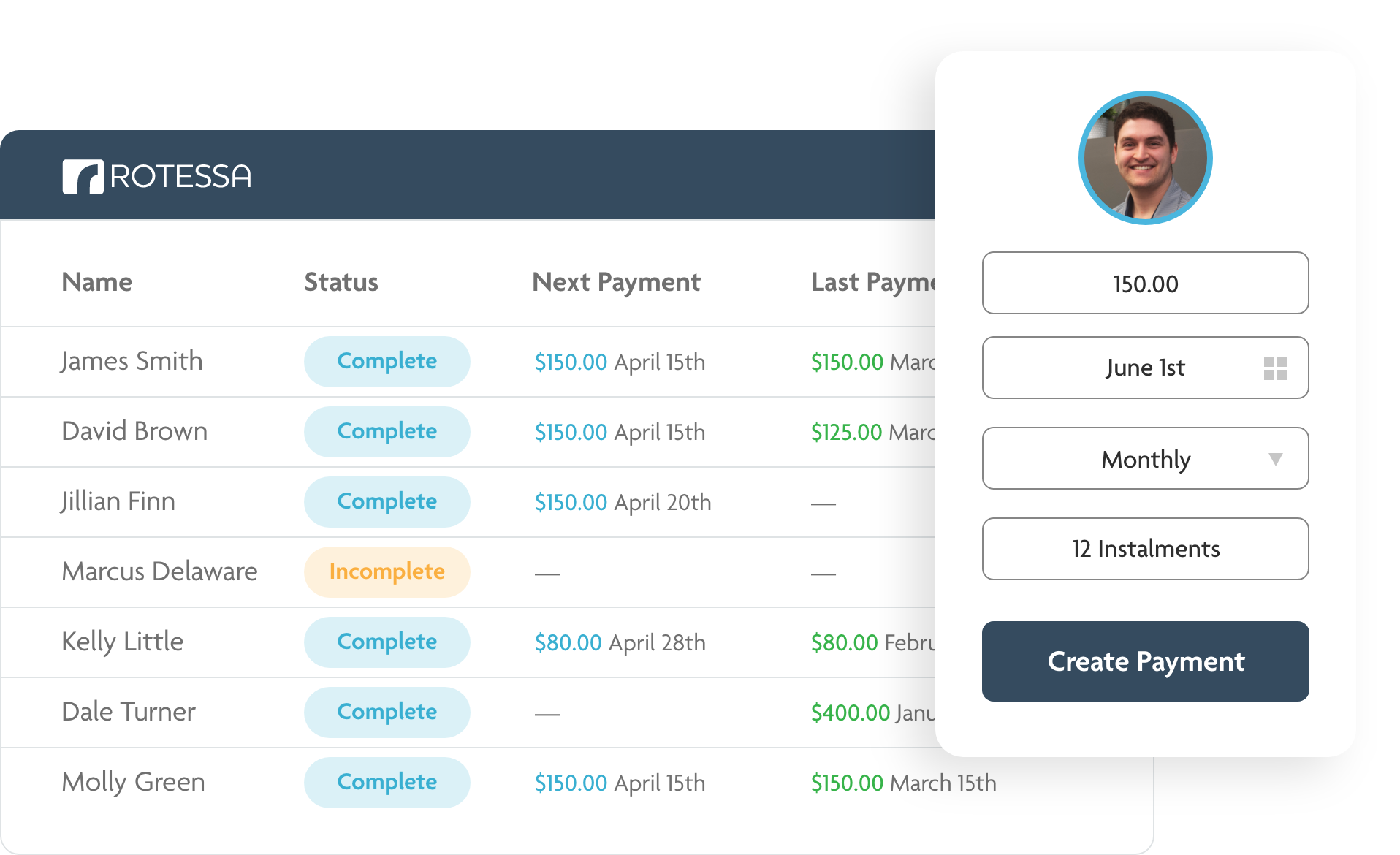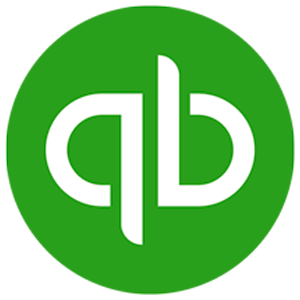What are pre-authorized debits?
Pre-authorized debit (or PAD for short) is an electronic payment in which money is withdrawn from a customer’s bank account and deposited into a business’ bank account.
The term pre-authorized refers to the arranged agreement of payment held between a business (the payee) and a customer (the payor). In the pre-authorization agreement, the customer gives permission for the withdrawal of funds from their bank account based on outlined terms. The agreement can outline terms of recurring payments on a schedule, single payments or an agreement in which payments are initiated by an event.
In the agreement, the payor submits banking information for access to withdraw funds. On the day that the pre-authorized debit is scheduled to process, funds are withdrawn from the payor’s bank account. The funds are settled in the payee’s bank account a few business days later.
Pre-authorized debit works across Canada’s banking network
PAD payments are submitted by financial institutions to a Canada-wide, federally regulated network called the Automated Clearing Settlement System (ACSS). ACSS is facilitated by Payment Canada and connects all of the country’s banks and credit unions. This is why PADs can be withdrawn and settled between different banks or credit unions all across Canada.
Because pre-authorized debit requires a pre-arranged agreement of payment terms, these types of payments are commonly used for ongoing payments like rent or membership fees.
What kind of businesses use pre-authorized debit?
Pre-authorized debit works best for businesses that collect multiple payments from a single customer. This can include businesses that collect payments set to a scheduled amount and timing or varying amounts and timing.

1. Businesses with recurring payment amounts on set schedules
Some businesses that use PAD have a payment model based on recurring payment amounts on a set schedule. These include:
- Landlords for rent
- Mortgage lenders for mortgage payments
- Colleges and universities for tuition
- Insurance companies for premiums
- Fitness centres for membership fees
- Daycares for monthly dues
- Clubs and leagues for membership fees
- Loan agencies and lenders for loan payments
- Professional services on retainer (ex. legal, marketing, advisory)
2. Variable payment amounts on set schedules
Some businesses have a payment model that has a set schedule for customers but varies in amount. These include:
- Utility companies for utility usage
- ISPs for internet usage
3. Variable payment amounts on a sporadic schedule
Finally, some businesses collect payments from recurring customers but with variable amounts and a sporadic schedule. Often these businesses have a payment model for hourly work, day rates and/or equipment expenses. These sporadic payments are triggered by an event that must be outlined in the PAD agreement. Businesses with variable payments from recurring customers include:
- Private healthcare companies (ex. dentists, optometrists) for services
- Rental companies for equipment or space rental
- Accounting firms for hourly work
- Marketing agencies for hourly work or day rates
- Law firms for hourly work
- Mechanics or repair companies for services
Businesses that pre-authorized debits do not work well for
There are some payment models that do not work well for PADs. Unlike PAD, credit and Interac® payments can be created instantly at a register terminal with a tap, swipe or insert of plastic. Pre-authorized debit on the other hand, requires the completion of an authorization form for permission for ongoing payments.
Retail businesses generally do not need permission for ongoing payments. They also want to minimize inconvenience and maximize expediency for shoppers. PADs require more time and inconvenience for customers to authorize and are oriented for recurring payments. Therefore, they are usually not a good option for retail businesses.
Pre-authorized debits work best when you have an established relationship with a customer
Although pre-authorized debits are just as secure and protected as credit or Interac® payments, there is a perceived additional need for prudence and caution when signing a PAD agreement as a payor. Because the payor is disclosing banking information and signing an agreement, they may be resistant if they don’t trust the business asking for the pre-authorization.
Although credit and Interac payments also submit payment authorizations like a PAD, swiping or tapping plastic feels less vulnerable than filling out and signing an authorization contract.
This, alongside PAD’s recurring nature, makes the payment method best suited for businesses that have an ongoing trusted relationship with their customers.
What are the benefits of pre-authorized debits?
There are three benefits to collecting payments with pre-authorized debit compared to traditional methods of cheque, credit card or cash.

1. Pre-authorized debits are automated
Once authorization of payment terms (amount, date, frequency) are granted by the payor, payments become automated. If monthly rent payments, for example, are created, the funds are withdrawn from the tenant’s bank account and deposited into the landlord’s. This happens automatically without the landlord (payee) needing to create a new payment every month.
Cheques and cash cannot be automated. Credit card payments, however, can be automated like pre-authorized debit.
2. They allow businesses to keep more (almost all) of a customer payment
While credit cards are versatile and can be automated like pre-authorized debit, their versatility comes with a financial premium. Credit card payment processing is priced on a percentage fee. Whether at a register terminal or at an online payment gateway, credit card processing usually costs between 2-4% of the payment. This means a $100 payment costs between $2 and $4 to process, leaving the payee with only $98 to $96 settled.
No percentage fees with PADs
Pre-authorized debit, on the other hand, can be processed without a percentage fee. They are offered by some banks and some third-party processors (such as Rotessa) for a fixed, non-percentage fee. Rotessa, for example, offers PAD payments for as low as 35 cents each.
For small payments, the difference between a percentage fee and a fixed fee may not be significant. For larger payments, however, like $1000 for rent, the difference can be substantial — between $20 and $40 for a credit card payment and a few cents for a pre-authorized debit payment.
Here’s a look at the difference between Rotessa’s pre-authorized debit fees and Stripe’s credit card processing fees.
| Transaction amount | Rotessa PAD: as low as $0.35 | Stripe credit card processing: 2.9% + $0.30 |
|---|---|---|
| $100 | $0.35 | $3.20 |
| $500 | $0.35 | $14.80 |
| $1000 | $0.35 | $29.30 |
| $5000 | $0.35 | $145.30 |
Fixed-rate PAD payments for as low as 35 cents per transaction.
Rotessa is your trusted partner for seamless payment automation and secure recurring payments. No onboarding costs or percentage-based fees.
3. The business can initiate a payment instead of the customer
With cash, cheque and most credit card arrangements, the power of payment initiation is in the hands of the payor. With PAD payments, a payee can initiate the payment without depending on the payor to do so. This is especially true when an authorization for a sporadic payment schedule is arranged in the pre-authorization agreement.
Sporadic schedule payments for pre-authorized debit
A PAD agreement can be made that authorizes all future payments based on a specific payment event trigger. This is the most versatile way for a business to arrange pre-authorized debits. Instead of being limited by a fixed schedule and amount for payments, a business with a sporadic PAD schedule is allowed to debit outside of a set frequency and amount. This is especially useful when payments vary in amount and timing. Just remember that the event that triggers a payment must be outlined in the PAD agreement.
How do pre-authorized debits work?
To begin the process of creating a pre-authorized debit, a business needs to first obtain authorization of the payment from a payor. Once authorization has been granted, the business can create a PAD payment through the services of their bank or credit union. Alternatively, a business can also create a payment through an online third-party processor like Rotessa.

The EFT batch file
When a business creates a PAD payment through their bank or credit union, the PAD details are added to the financial institution’s Electronic Funds Transfer (EFT) batch file.
An EFT batch file is a digital file that is submitted by financial institutions to the ACSS payment network. This file contains PAD payment instructions including payee and payor account numbers. Businesses cannot independently submit an EFT batch file to ACSS, they must go through an institution connected to ACSS. EFT batch files are submitted by financial institutions at specific times throughout a business day.
When the EFT batch file is received by ACSS the transaction is initiated electronically. The funds are withdrawn from the payor’s bank account, as specified in the EFT batch file, and settled in the payee’s bank account. This process can take one to four business days for security and assurance reasons.
This process may seem complicated. However, it’s strictly what happens on the back end of a PAD payment. With a third-party processor like Rotessa, businesses never need to touch or worry about EFT batch files or the ACSS payment network. They only need to create customers and payments.

Are pre-authorized debits secure?
Pre-authorized Debits are very secure and are regulated by Canada’s federal government. All of the information that passes through the ACSS payment network is encrypted. This means it can’t be redirected, read, or tampered with.
The federal legislation that outlines the regulation of PAD payments is called the Electronic Payments Regulations under the Financial Administration Act. This act details the rights and liabilities of payors and payees using pre-authorized debits, with the intention of protecting both. The regulations also contain a clear mandate to ensure any unauthorized debits can easily be reversed.
Payments Canada maintains an updated document titled Rule H1 which gives specific detail on the rules of pre-authorized debits in Canada.
How does a business start accepting pre-authorized debits?

First, a business needs to do one of the following:
- find an institution connected to ACSS that offers PAD services (this would probably be their bank or credit union)
OR - choose a third-party PAD processor (like Rotessa or one of these seven Canadian PAD processors)
The next step is to obtain authorization from the business’ customers.
Obtaining PAD authorization is the most important step
When using a bank or credit union, a business is more on its own in obtaining customers’ authorizations. A bank or credit union may offer a generic paper PAD authorization form for business use. Otherwise, the business needs to create its own authorization with all of the required details (see below) or, alternatively, they could find a template online.
When using a third-party processor, PAD authorizations are offered free as an integrated feature. With Rotessa, a custom online PAD authorization form can be sent to a customer as a link or an email.
Once an authorization is completed, payments can be created and submitted to the bank, credit union or third-party processor (if they are in accordance with the details of the authorization). Funds are withdrawn from the customer’s bank account on the payment process date and settled in the business’ bank account a few days later.
Send PAD authorizations from within the Rotessa app
Rotessa is your trusted partner for seamless payment automation and secure recurring payments. No onboarding costs or percentage-based fees.
Authorizations and why they are needed for pre-authorized debits
A PAD authorization (or PAD agreement) is the required agreement between a payee and the payor. A completed PAD authorization outlines the details of the payment, contains the payor’s banking information, and exists as the contract for the debiting.
Authorizations can be obtained via a physical paper form that is filled out, an online form that is filled out, or vocally over the phone. There are specific details that are required on all PAD authorizations they are:
- The payee’s contact information
- The payor’s name and contact information
- The bank branch transit number
- The payor’s bank account number
- The payor’s institution ID number
- The amount and timing of the payment (for recurring or single payments authorization)
- Agreement for payment
- An authorization statement
- Cancelation details
- A recourse statement
- The date of agreement and signature (if a physical paper form)
- Name of a third-party payment processor if one is used
For more in-depth information on PAD authorization forms, read our PAD authorization form blog post.
How to get a pre-authorized debit form
There are four ways to get a pre-authorized debit form for business use:
- From a bank or credit union. Many banks and credit unions offer free generic PAD paper forms for business clients.
- Manually create one. Businesses can create their own PAD form if it includes all of the required details listed above.
- Use an online tool. Businesses can use this online PAD form generator to create a PAD form.
- With an online payment processor. Perhaps the simplest option is to use a third-party payment software to collect and manage PAD form agreements online.
How long do pre-authorized debits take?
Depending on the processor or financial institution, pre-authorized debits can take between one and four business days from the process date to settle in the payee’s account. The settlement delay is intended to ensure that the funds are actually cleared from the payor’s account before arriving in the payee’s account. The delay also provides time to stop the transfer if there is a need from the payee or payor to cancel the payment.
Pre-authorized debit rejections
A PAD rejection is when a PAD payment has been submitted to the ACSS payment network but failed to process and settle into a payee’s bank account. There are a number of reasons why a PAD rejection can occur. There could be insufficient funds in the payor’s bank account, the payor could request the payment to be stopped, or incorrect bank account numbers could have been submitted in the EFT batch file.
Case Study: how to use pre-authorized debit for rent
One of the best use cases for pre-authorized debit is for collecting rent payments from tenants. For a landlord, pre-authorized debits can ensure automated payments that are consistent, on time, and affordable.

Step 1: getting tenant authorization
The first step for a landlord to begin collecting rent payments with PADs is to obtain authorization from the tenant. This authorization could be included with the signing of the rent agreement or emailed separately (through software like Rotessa).
Once tenant authorization is obtained (which includes the tenant’s banking information) the landlord can begin creating monthly PAD rent payments. This could be done through the landlords’ bank or through a third-party processor like Rotessa.
Step 2: setting up the payment with a third-party processor
If the tenant completed an offline PAD agreement the landlord would need to create the tenant as a customer in Rotessa’s software by inputting their name and banking details. If the PAD agreement was completed online by the tenant through Rotessa, a customer is automatically created. With verified banking details, the landlord simply needs to create the payment in the software according to the authorization. This step only takes a minute and includes specifying the amount, frequency and processing date of the payment. For example, $1500 once a month on the first day of the month.
When these steps are completed, a $1500 rent payment is automatically withdrawn from the tenant’s bank account every month on the first day and deposited in the landlord’s.
What’s the difference between pre-authorized debit and ACH payments?
ACH payment is an American term to describe an electronic bank-to-bank payment. ACH stands for Automated Clearing House and describes the financial network in the United States that facilitates electronic bank transfers. The ACH network handles the type of pre-authorized debit settlements that the ACSS network does in Canada.
The term ACH payment is often used instead of PAD payment in the United States. An ACH payment, however, is a slightly broader payment term, as it can describe both a pre-authorized debit and pre-authorized credit.
Canadians do not use the term ACSS payment as an alternative to ACH payment, because in Canada, the ACSS network handles more payment types than the ACH network does in the United States. Besides pre-authorized debits and credits, ACSS also clears cheques and debit transactions.
A word that also sometimes acts as an alternative word for ACH payment in Canada is EFT payment. EFT payment is an umbrella term in Canada for all electronic payments including those facilitated over the ACSS network, both debits, and credits. EFT payment, however, is not a direct alternative term for ACH payment, as it describes electronic payments (like a wire payment) that are not covered by the ACH network in the United States.
How long do pre-authorized debits take?
Depending on the financial institution or processor, PADs can take between one and four business days to settle in the payee’s account after the process date.
It may seem like a while, but the settlement delay ensures that the funds are actually cleared from the payor’s account before being settled. The delay also decreases the risk of fraud and provides a buffer time for payment cancelation or reversal.
Pre-authorized debits are only processed by ACSS on business days.
How to cancel pre-authorized debit (as a payor)
To cancel a PAD, the payor (customer) needs to notify the payee (business) in writing. This cancelation process should be outlined in the pre-authorization agreement. When a payor submits a PAD cancelation request, the payor is required by law to cancel the PAD.
The request to cancel a PAD does not cancel the payor’s payment obligation to the payee. For example, a tenant canceling a PAD agreement with a landlord does not cancel the rent that they owe or the tenancy agreement that the tenant signed. A PAD cancelation simply terminates the debiting payment method. Often a payor may cancel a PAD if they wish to pay with a different payment method.
How can small businesses benefit from pre-authorized debit?

Most Canadians know of pre-authorize debit from being PAD payors for their utility fees, phone bills or rent. Most Canadians, however, do not know how PAD payments work from the payee (business) side.
Many small business owners perceive pre-authorized debit as an untenable payment method that is unavailable or too great a hassle for their staff and customers. Unfortunately, many financial institutions fail to streamline and simplify the process of collecting PAD payments and rarely market them as an attractive option for business clients.
The solution for small businesses!
Fortunately, Rotessa offers very simple online software to small businesses that want to benefit from pre-authorized debit. Rotessa is the easiest way to collect PAD payments in Canada and is the most affordable third-party processor for small businesses. With Rotessa, a business can create a customer PAD in a matter of minutes from their computer or even mobile device.
Reach out to the sales team for a free one-on-one demo to learn how PAD payments can work for your small business.
Share this content with a friend:
A better way to get paid
Withdraw money directly from your customer’s bank account when their payments are due. Schedule one-time or recurring payments to get paid on time.
